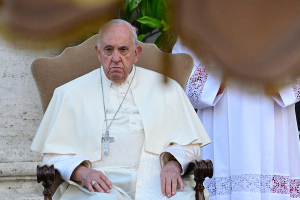Christmas price tag: Commercial vs. spiritual

Each year, the National Retail Federation predicts the spending patterns of Americans during the holidays. As 2024 winds down, Christmas expenditures are ahead of last year, with an anticipated total of $989 billion nationwide. The typical shopper will spend $641 on family or friends and an additional $261 on seasonal items like wrapping paper and decorations. Interestingly, 57% of consumers plan to buy something for themselves this Christmas.
Since most don’t budget for these additional financial strains, many of us will not know exactly how much we spent on Christmas until that first credit card statement arrives in January. Through finance charges and late fees, the Ghost of Christmas Past often keeps our celebrations alive well past the New Year. One in five Americans will live with the ghoulish reminder of overindulged shopping and impulse purchases until Independence Day of next year!
These observations notwithstanding, I want to suggest that no matter how much our festive indulgences cost us, the real price tag for Christmas is astronomically higher. No amount of spending can begin to compare to the great sacrifice the Lord Jesus made because of His first coming. From beginning to end, His mission to seek and to save the lost was costly in every conceivable way.
Though we herald the birth of the newborn King, Jesus’ incarnational arrival was an incredible step down from His eternal home. Taking on human flesh veiled the glory that Jesus had with the Father before the world was (John 17.5). As Mary held the Lord in her arms, the omnipotent One was too weak to raise His head; the omniscient One could not form a single sentence; and the omnipresent One resided as a tiny baby boy within time and space.
Added to all of this was the sobering reality that Jesus’ birth was one unto death. The miracle of Christmas was not merely that Jesus was born to live among us, but that He was born to die for us. As inspiring as the manger is, the real wonder this season is in the mission the manger represents. Jesus left His home in Heaven in order to long for home on a cross as He died for sinners like you and me. The salvation which is free to all who will believe was the most costly gift in human history.
And what was the price Jesus had to pay? The Scripture simply says the wages of sin is death (Rom. 6:23). Biblically, death is both a physical and spiritual reality. Because all people are sinners, all of us will physically die one day. Those who are outside of Jesus Christ, however, will face a second death that is spiritual in nature. Though the reality of Hell has become uncouth to some, the saving purpose of Christmas is tied directly to God’s effort to rescue the lost from perishing (Luke 19:10).
Thus, the same Jesus covered in swaddling clothes under a Bethlehem sky would later be wrapped in similar burial rags after dying on a cross. Recording his final hours before death, the gospel of Matthew offers clues about the tremendous expense of providing salvation. For three hours, from high noon to 3 p.m., darkness fell upon the land while Jesus hung in agony (Matt. 27:45) as a picture of mourning (Amos 8:9-10). During those painful moments, Jesus received the punishment we deserved as He became sin for us (2 Cor. 5:21). No wonder Jesus described Hell as a place of outer darkness where there is weeping and gnashing of teeth (Matt. 8:12).
Even worse, however, was the relational separation from His Father that Jesus faced. In anguish, He lamented, “My God, My God, why have You forsaken Me (Matt. 27:46)?” The God who is light, and in whom there is no darkness at all (1 John 1:5) cannot tolerate sin of any kind. As Jesus became the curse for us (Gal. 3:13) and the propitiation for our sins (1 John 4:10), God the Father was pleased to crush Him on our behalf (Isa. 53:10). Remarkably, the One in whom the fullness of deity dwells in bodily form (Col. 2:9) drank deeply from the wrath of God for those He came to save.
Admittedly, these reminders are not pleasant. In fact, the efforts of many to minimize the true meaning of Christmas may be nothing more than a refusal to own the universal wickedness of humanity. Yet, the sobering price tag of our favorite holiday reveals the glory of our Savior. Despite the tremendous cost, Jesus paid it all. Because of Him, salvation is possible for any person who will call upon His name in repentance and faith. So, as we remember who He is this Christmas, let’s celebrate why He came.
Dr Adam B. Dooley is pastor of Englewood Baptist Church in Jackson, TN, and author of Hope When Life Unravels. Contact him at adooley@ebcjackson.org. Follow him on Twitter @AdamBDooley.




























